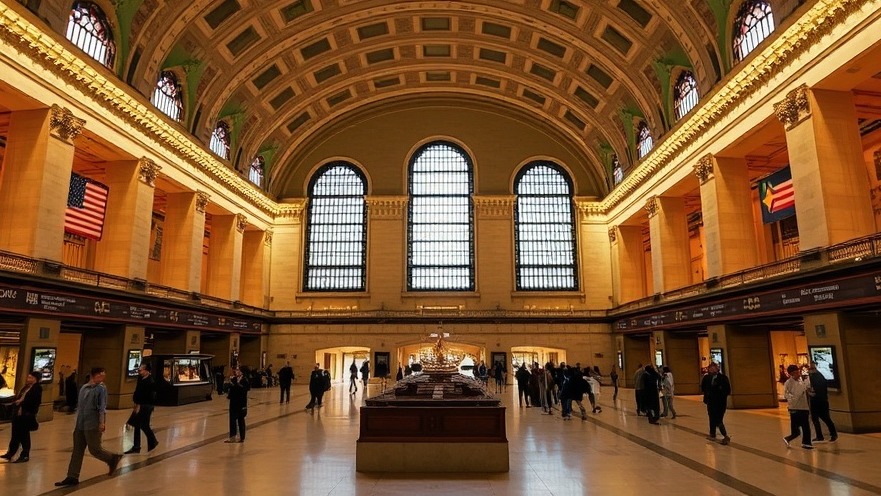
Trump Takes Control of Union Station: A Federal Shift
In a move that signals a stronger federal presence in Washington, President Donald Trump has ordered the U.S. Transportation Department to reclaim management of Union Station. This decision arises from a belief that the current management, a nonprofit operating alongside Amtrak, has neglected this iconic transportation hub, leading to concerns over cleanliness, safety, and maintenance.
Understanding the Stakes: Union Station's Current State
Union Station, a Beaux-Arts masterpiece opened in 1907, is both a historical landmark and a vital transportation node for the Northeastern corridor. However, it is facing billions in overdue renovations. The station’s infrastructure is crumbling, with broken facilities and overcrowding contributing to an unsafe atmosphere characterized by crime and homelessness. The urgency of reforms is underscored by a recent murder that took place in its parking garage, evoking a sense of insecurity among commuters.
The Federal Government’s Vision for Transformation
Transportation Secretary Sean Duffy emphasizes that the federal government’s intervention aims not just at management efficiency but also at the rejuvenation of Union Station's image through strategic improvements and increased rental income. Duffy assured that the government's efforts would focus on creating a more appealing environment, mitigating issues of homelessness and safety. This perspective aligns with the wider context of federal pressure to enhance urban infrastructure amidst rising concerns about crime and maintenance neglect in major cities.
Local Reactions: A Mixed Bag
Local officials, including Washington Mayor Muriel Bowser, have reacted with cautious optimism. They support enhanced federal investment, given that the local government lacks the funds—estimated at over $8 billion needed for significant renovations. Mayor Bowser's call for federal contributions highlights a growing concern about local resource limitations, reinforcing the necessity of federal aid in urban management issues.
The Political Context: Implications of Increased Federal Control
This move is part of Trump’s broader strategy to assert more control over Washington, which has included deploying National Guard troops and taking charge of local policing. Such actions have stirred controversy among local officials, some of whom view it as an encroachment on municipal authority. The reclaiming of Union Station's management is being framed as a response to inadequacies in local governance and urban management but also raises concerns of political maneuvering amidst an election year.
Looking Ahead: Future of Union Station
As the Biden administration's proposed $10 billion redevelopment plan gets scrapped, the new strategy for Union Station remains uncertain. The shift could impact Amtrak’s operational focus, especially as it recently rolled out new Acela trains to accommodate a growing passenger base on the Northeast Corridor, a route crucial to economic activity in the U.S. This corridor is responsible for a significant portion of the nation's economic output—approximately 20%—underscoring the importance of maintaining a functional and appealing Union Station.
Conclusion: The Need for Sustainable Solutions
The future of Washington's Union Station hangs in the balance as federal plans unfold, aiming to address pressing issues while managing the potential backlash from local politics. For residents and commuters, the hope is that these federal interventions will translate into visible improvements. The focus should remain not just on control, but on collaborative approaches that partner local insights with federal resources to create a Union Station that meets the needs of its diverse users.
 Add Element
Add Element  Add Row
Add Row 



Write A Comment